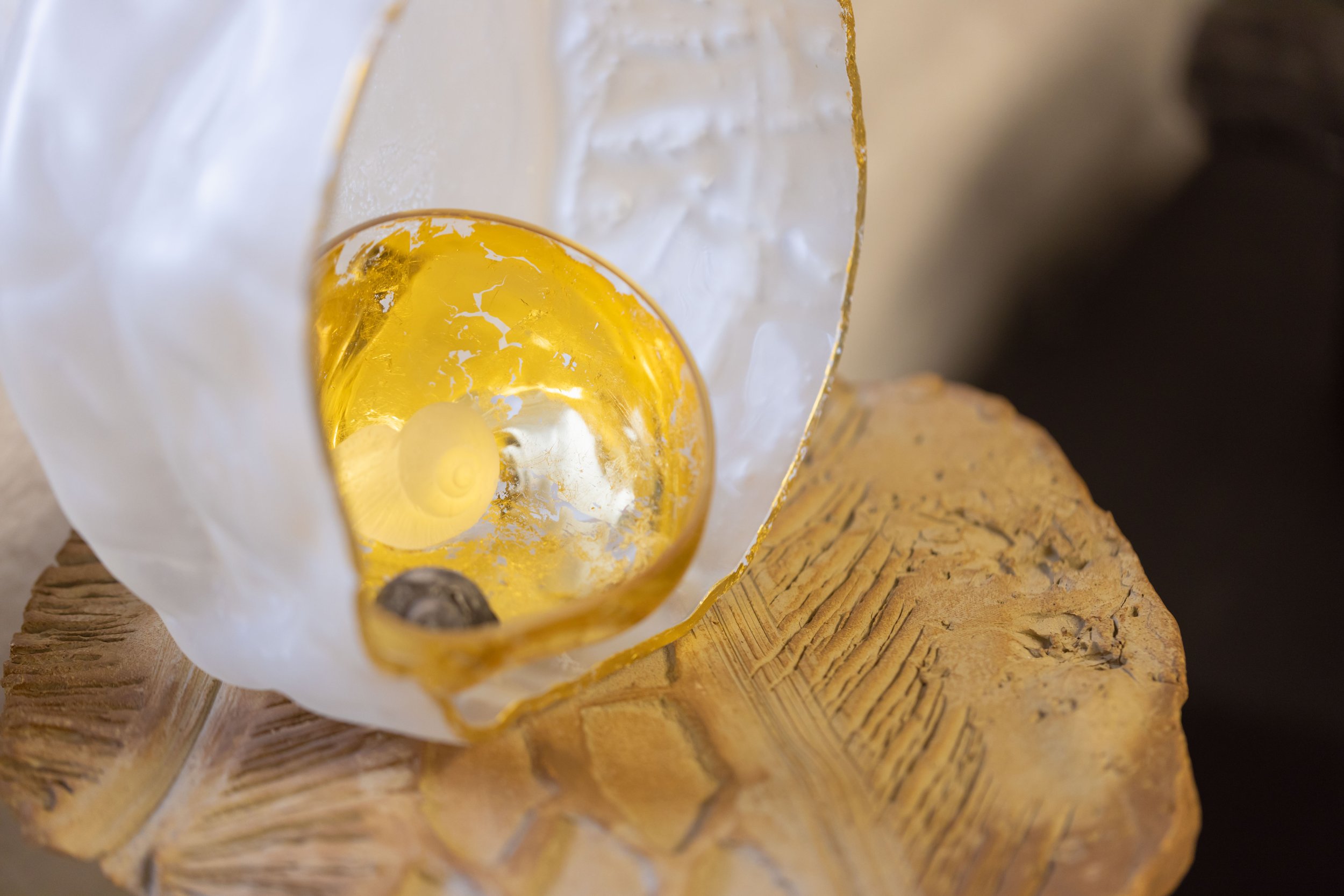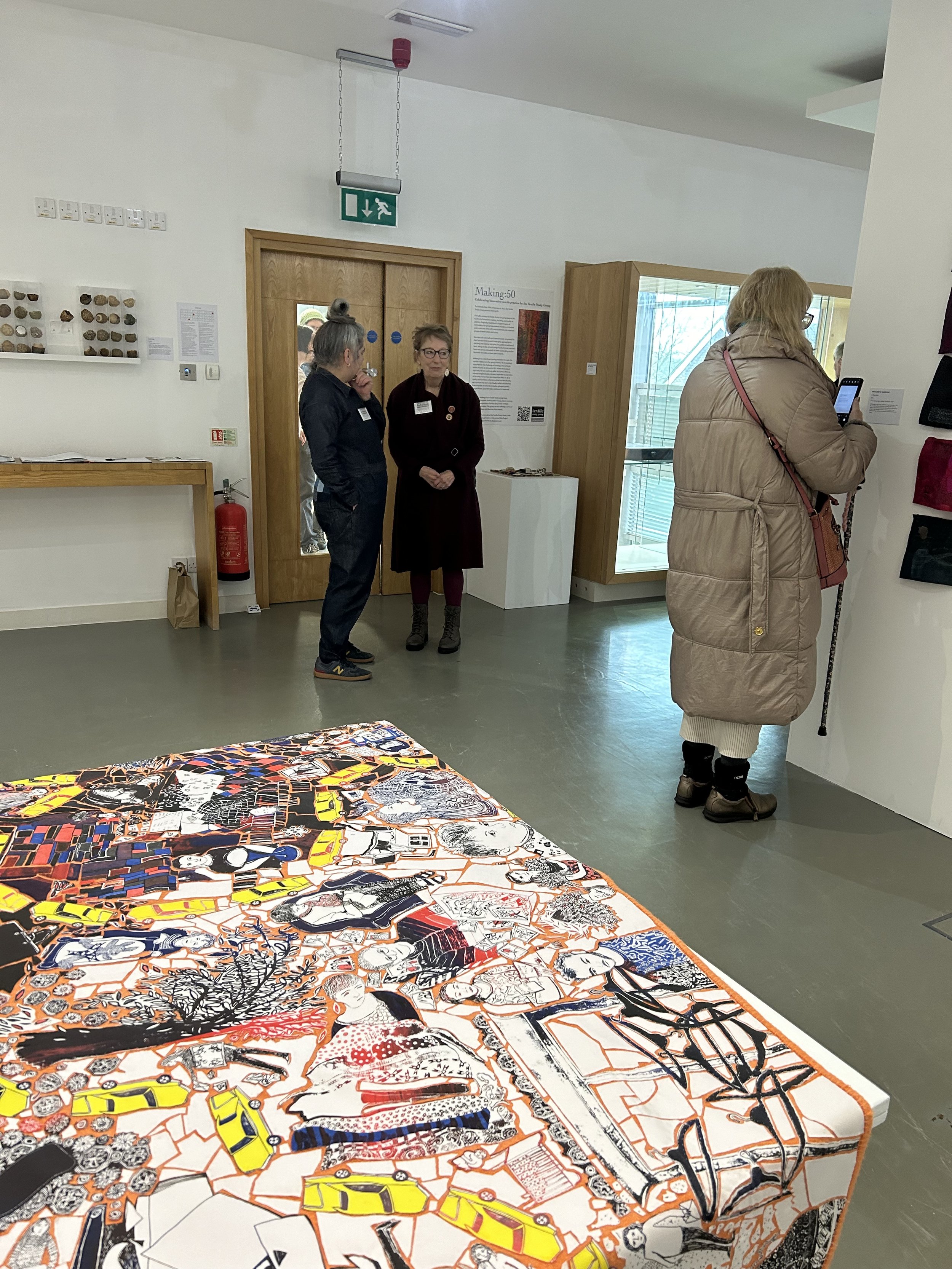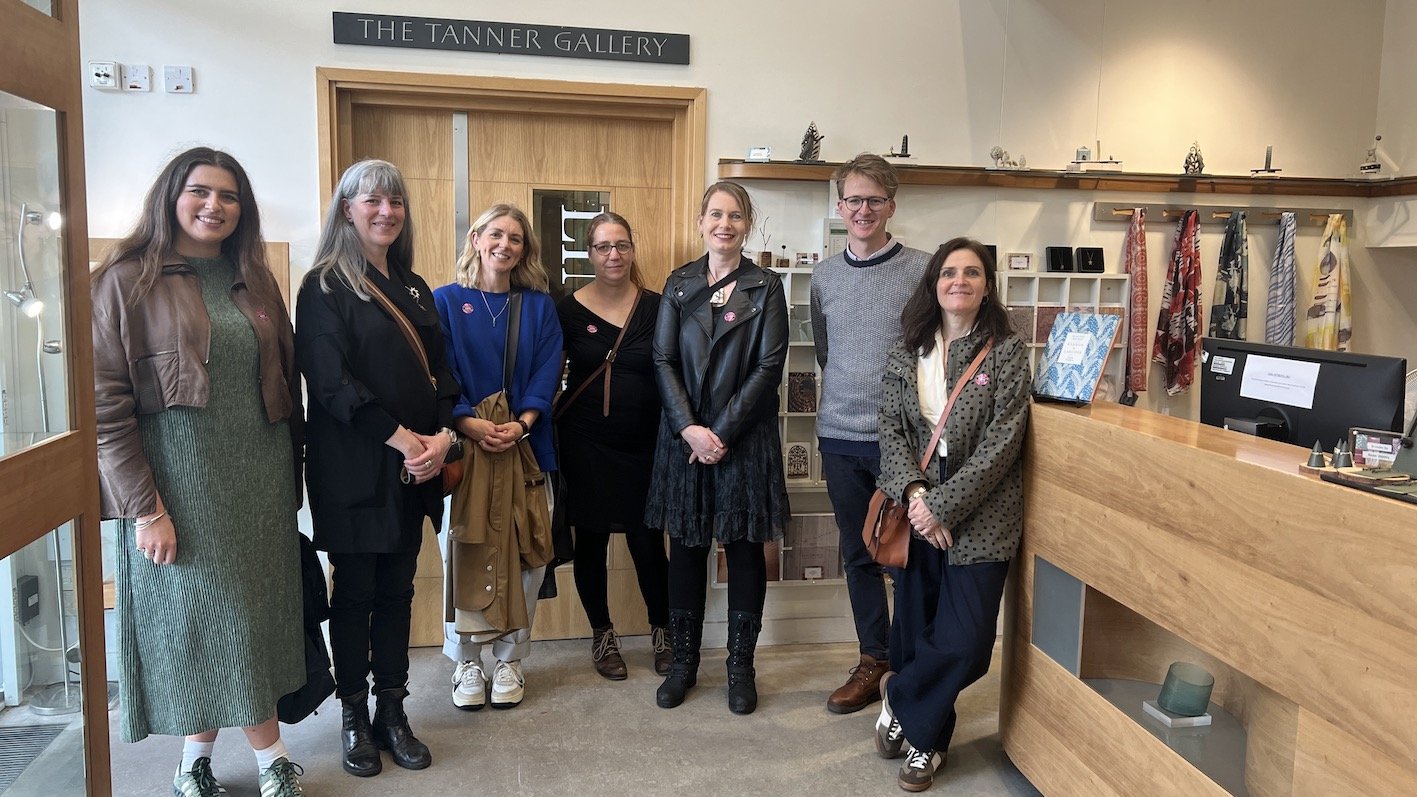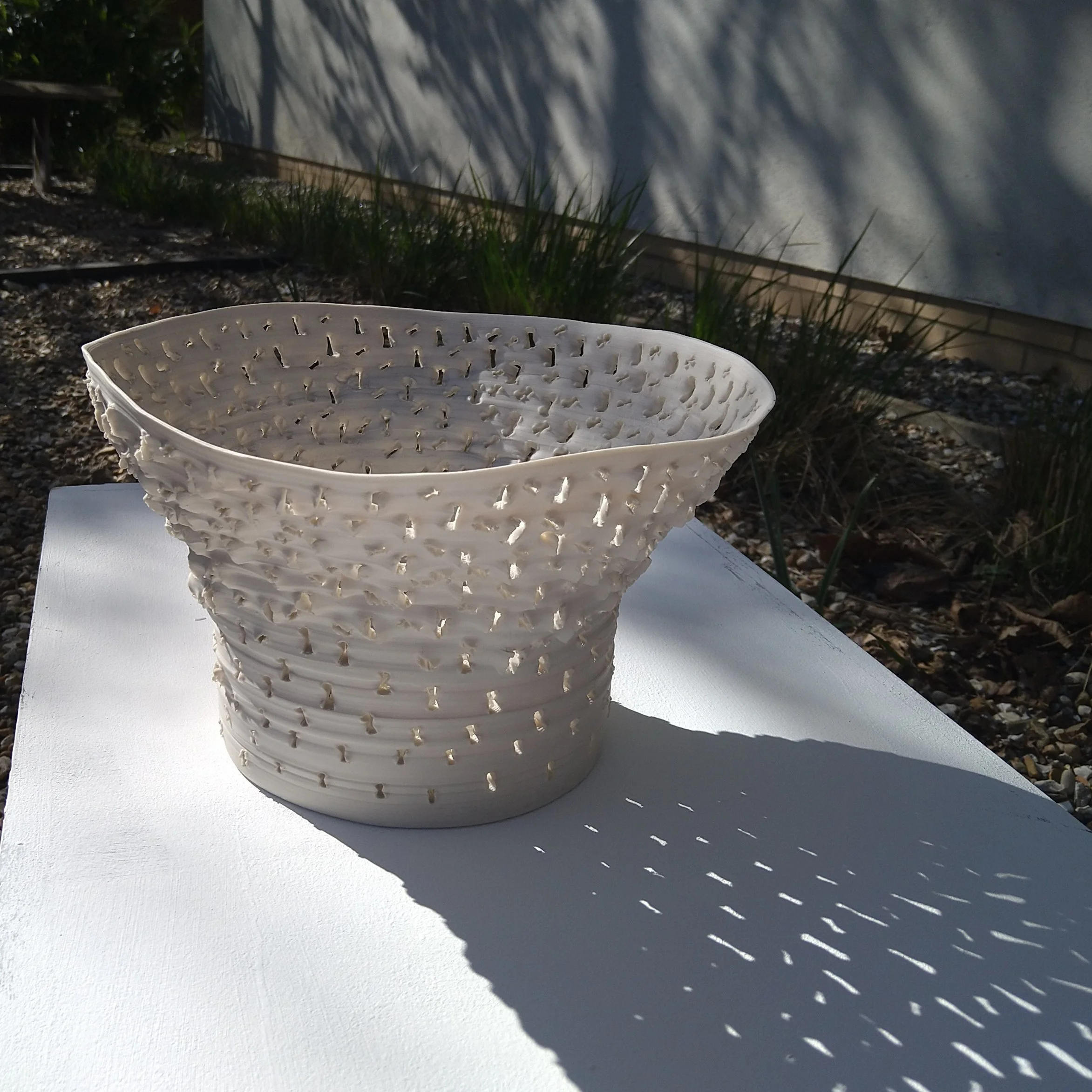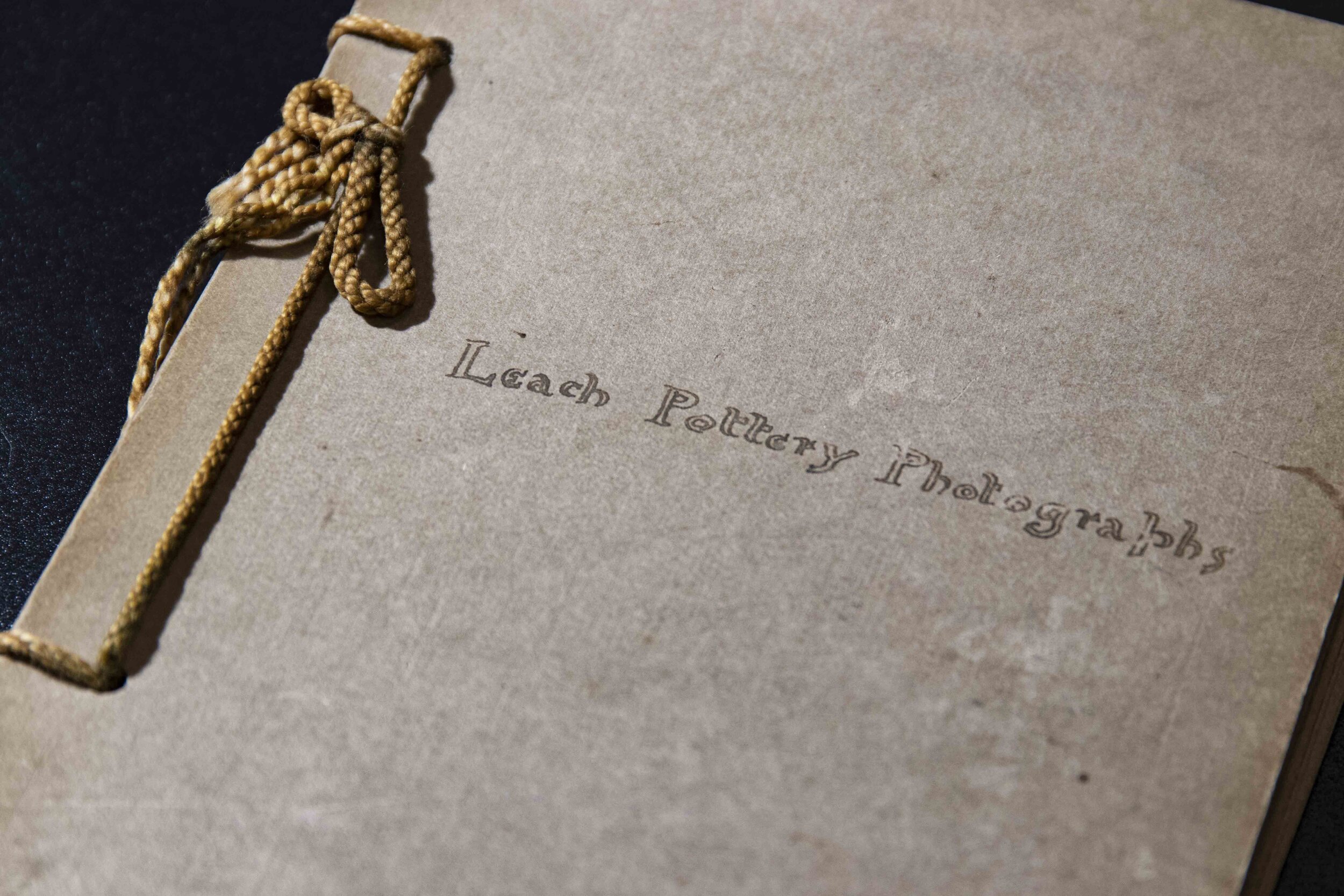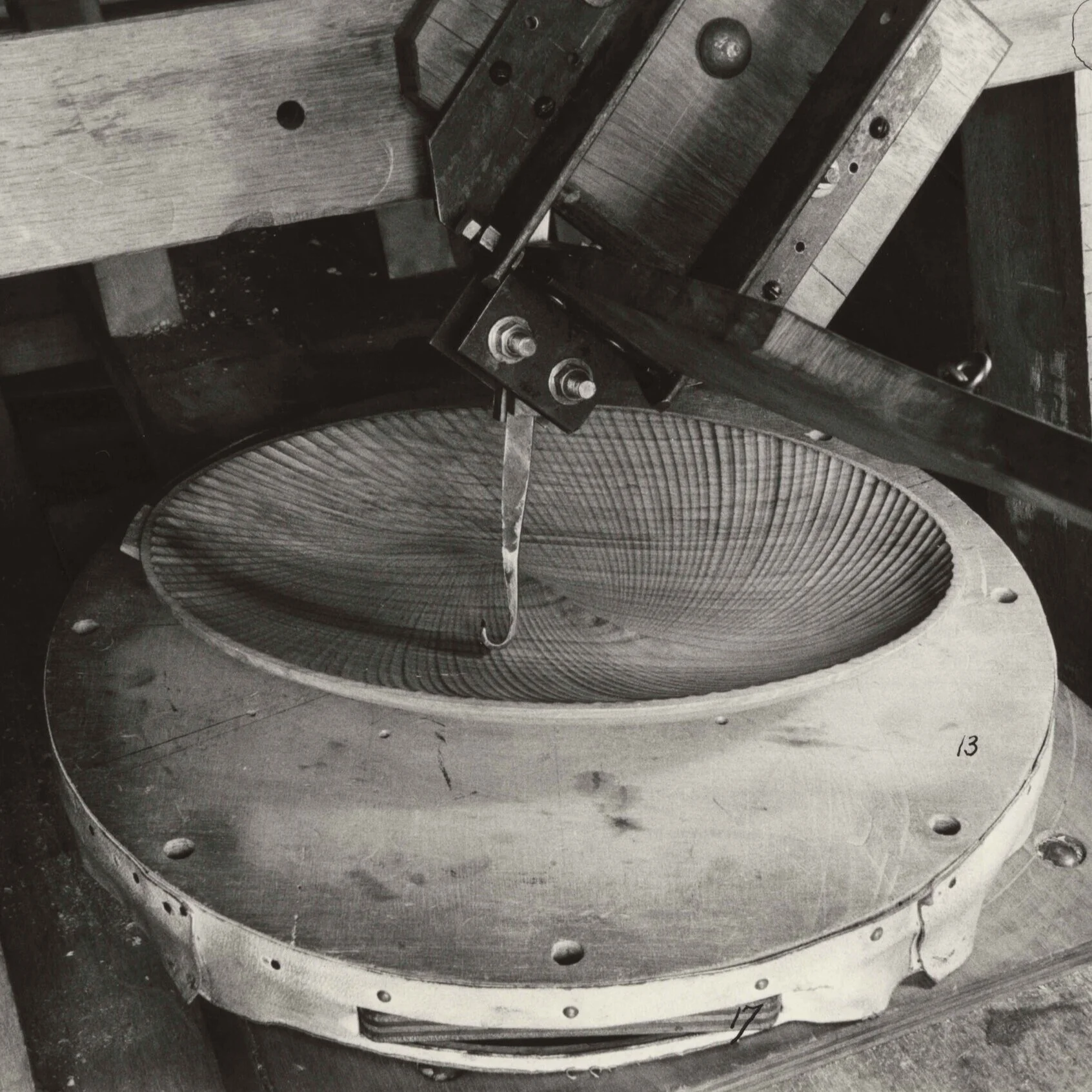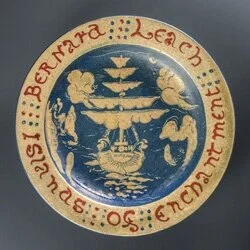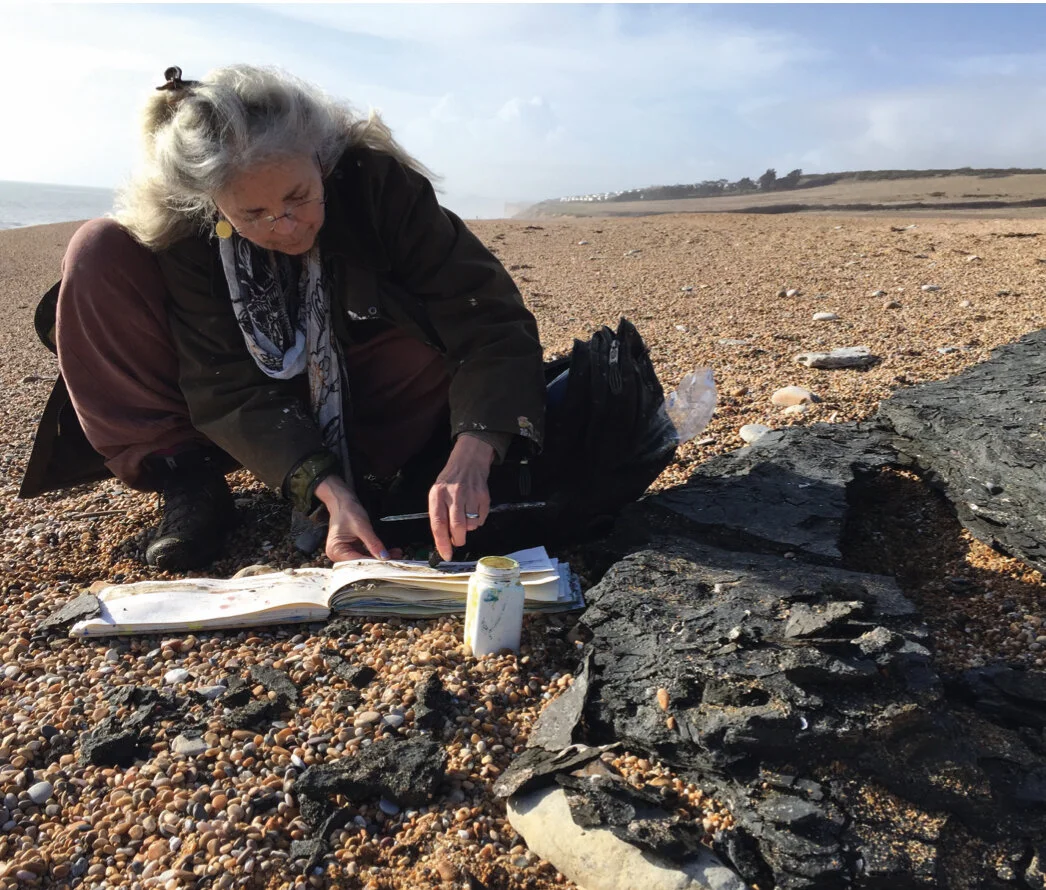Rosemary Wren's Bird: Woman's History Month showcase
/Rosemary Wren, Model of Bird (1950s), stoneware, grey with brown spots; saltglazed, with iron oxide broken through glaze to represent spots. Crafts Study Centre P.84.30.
To select an item from the Crafts Study Centre collections for our showcase on the ground floor to mark Woman’s History Month is to be spoilt for choice. From the textile designs of Phylis Barron and Dorothy Larcher, the ash glaze experiments by Norah Braden and Katherine Pleydell-Bouverie, Ethel Mairet’s weaving and the calligraphy of Anne Hechle, the collections document the life and works of many pioneering women. Their craft practice provided a vehicle for creative expression and alternative ways of living and their histories are becoming better known. The exhibition at the Leach Pottery, St Ives on Leach’s first students highlights the importance of Braden and Bouverie, and increasing attention has been paid to generations of female textile pioneers, from Hilary Bourne, Mairet, and Althea McNish.
Rosemary Wren’s work has often been positioned in the shadow of her mother Denise, another trailblazer who built the Oxshott Pottery in rural Surrey in the early 1920s. However, she played a significant role as the first chair of the Crafts Potters Association (1958-65) and developed her own characteristic bird and animal figurines often using saltglaze techniques she developed with her mother at the Oxshott Pottery.
In being alerted to Rosemary’s importance I should thank Charlotte Samuels a PhD student at Kingston University who is completing a doctorate on the Wrens and their importance in the story of twentieth century studio pottery.



